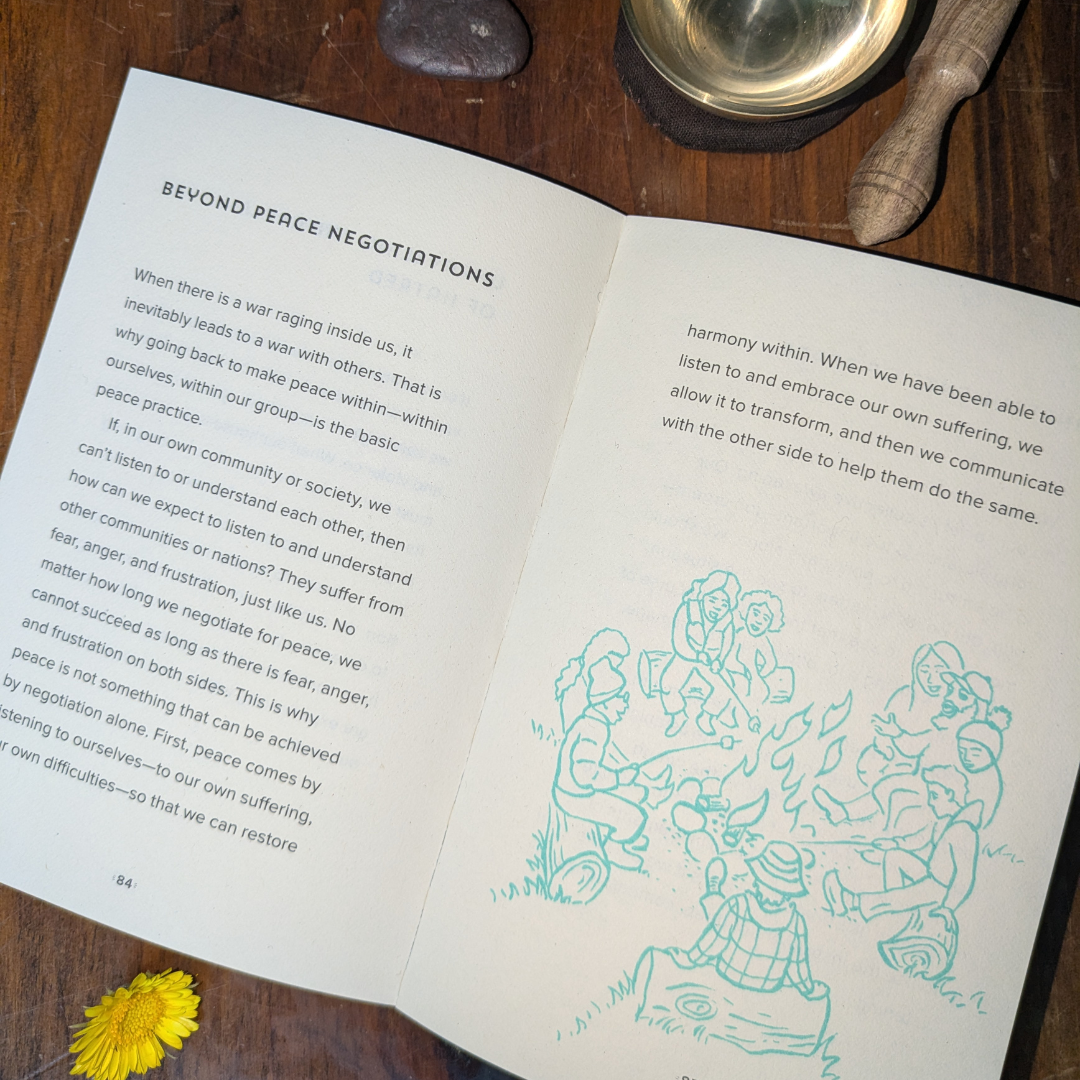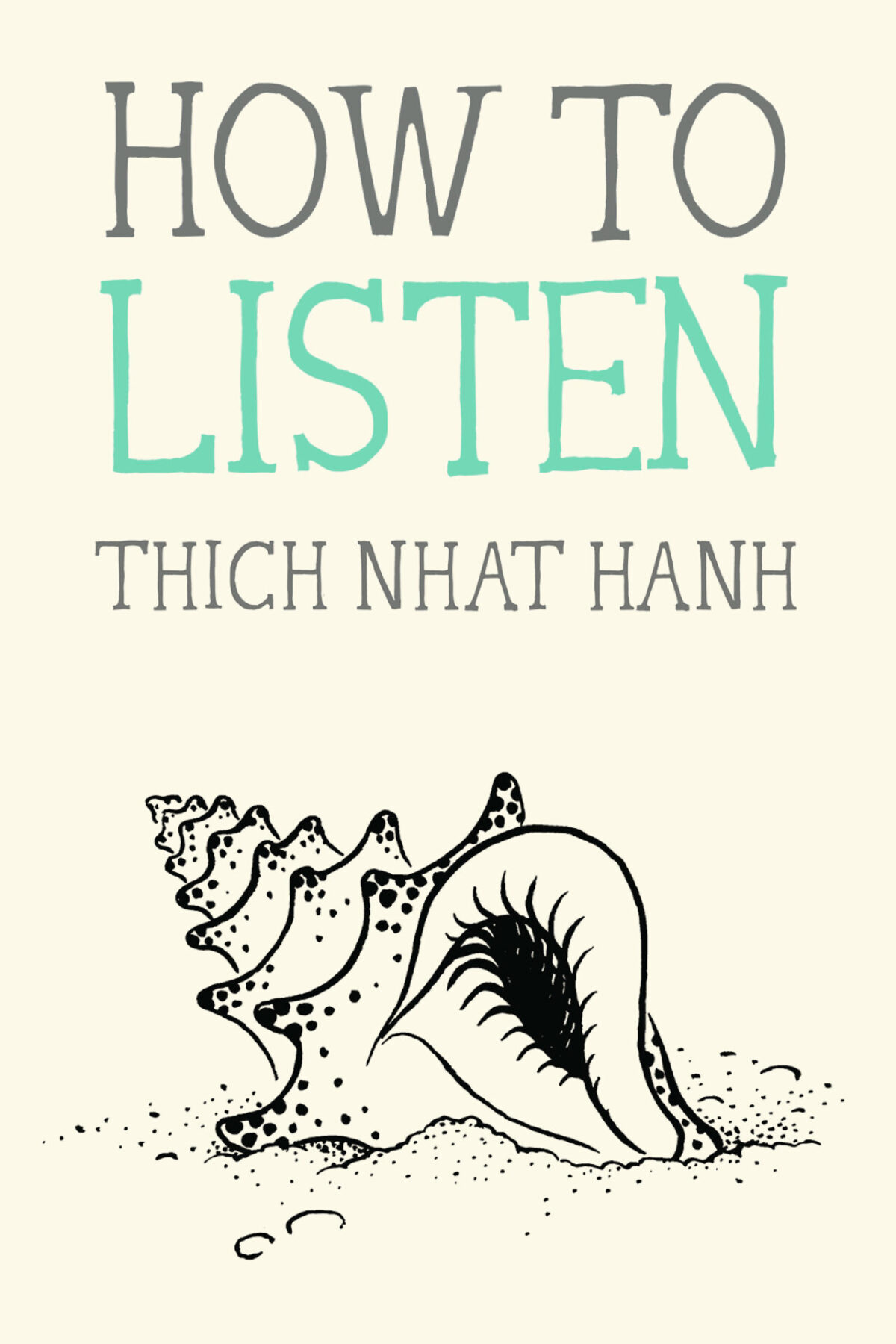In excerpts from the newest release in the bestselling How To series, Thầy demonstrates how deep listening is a basic ingredient to strengthen our capacity for mindfulness, concentration, insight, and compassion.
By Thich Nhat Hanh on

The “Other Side”
Looking deeply, we realize that we have wrong perceptions about ourselves as well as about the “other side.” We should try to remove our own wrong perceptions by listening to other political leaders—in Europe,
In excerpts from the newest release in the bestselling How To series, Thầy demonstrates how deep listening is a basic ingredient to strengthen our capacity for mindfulness, concentration, insight, and compassion.
By Thich Nhat Hanh on

The “Other Side”
Looking deeply, we realize that we have wrong perceptions about ourselves as well as about the “other side.” We should try to remove our own wrong perceptions by listening to other political leaders—in Europe, in Asia, in Africa, and everywhere. Our own wrong perceptions lead to conflict, to suffering, and to war. In order to prevent war and violence, we need to transform wrong perceptions—both our own and the other side’s. There is no other way.
Beyond Peace Negotiations
When there is a war raging inside us, it inevitably leads to a war with others. That is why going back to make peace within—within ourselves, within our group—is the basic peace practice.
If, in our own community or society, we can’t listen to or understand each other, then how can we expect to listen to and understand other communities or nations? They suffer from fear, anger, and frustration, just like us. No matter how long we negotiate for peace, we cannot succeed as long as there is fear, anger, and frustration on both sides. This is why peace is not something that can be achieved by negotiation alone. First, peace comes by listening to ourselves—to our own suffering, our own difficulties—so that we can restore harmony within.
When we have been able to listen to and embrace our own suffering, we allow it to transform, and then we communicate with the other side to help them do the same.
Instruments of Peace
We should live our lives so that we contribute to our society’s collective awakening. Our world situation is too important—too urgent— to be entrusted to politicians alone. We should help our political leaders to see the situation more clearly, to see that their present course of action is causing a lot of destruction, damage, and hate.
Violence does not work. If we want it to stop, we must use compassionate listening and gentle speech to remove the wrong perceptions that are at the foundation of hate and violence. We don’t need instruments of violence like bombs and guns if we are able to use the instrument of deep, compassionate listening.
Begin Right Now
We can begin right now to practice calming our anger, looking deeply at the roots of the hatred and violence in our society and in our world, and listening with compassion in order to hear and understand what we have not yet had the capacity to hear and understand. When compassion begins to take shape in our hearts and minds, we begin to develop concrete responses to our situation. Once we have listened and looked deeply, we may begin to develop the energy of siblinghood between all nations, which is the deepest spiritual heritage of all religious and cultural traditions. In this way, the peace and understanding within the whole world is increased day by day.
Listening to Understand, Understanding to Reconcile
If you listen with mindfulness to someone with whom you have a deep conflict, you’ll recognize that they have suffered in almost the same way as you. As you listen, you see that they have the same fear, anger, and suspicion, and you begin to see them as a human being. And when you see them as a human being who is suffering, the desire to punish them dissolves; you begin to look at them with the eyes of compassion.
That is how you can transform yourself through the practice of compassionate listening. Now, looking at the other party, you suffer much less because you can see that they suffer, too. When you look at them with this awareness, they see the understanding in your eyes; they feel you looking at them with love and not with suspicion, fear, or anger. Transformation takes place on both sides.
Listening with Compassion to Relieve Suffering
Sometimes it only takes half an hour of listening to someone deeply for them to feel relief from their suffering. But you must be truly present, in the here and the now, with compassion in your heart. Whatever the other person says, even if it’s untrue or comes from a wrong perception, even if it is full of bitterness, blame, and false accusations, as long as you can remain calm and open, it won’t touch off anger and irritation in you. You will be protected by your own compassion and calm. You know you are listening with only one purpose in mind: to help the other person relieve their suffering.
If you interrupt and correct them, you’ll turn the session into a debate and you will have missed the opportunity to help them. Later on, you may be able to help correct their wrong perceptions, but for now, you just listen with compassion and an open heart and mind.
Creating Space
When another person speaks—our father, our partner, our child, our teacher, a sibling—we should know how to listen to them. Knowing how to listen means that we give the person a chance; we allow what we hear to sink in. For that to be possible, we must create space in our heart and mind. If our teacup is already full, how can we pour in more? The teacup must have space, and we must have space, too.
Every one of us has lots of opinions, lots of views, and those opinions and views may be what we call wrong views—full of bias, prejudice, stereotypes, or wrong perception. But when we let go of our opinions and views—when we create space—then what others say can truly penetrate. So please empty yourself when you listen—that’s the art of deep listening.
We fight each other, we kill each other, and we wage war, all because we don’t know how to make space within ourselves or how to listen deeply. If we know how to do this, we stand a good chance of building peace and helping humanity.
The Power of Listening
Listening deeply to another is a form of meditation. We follow our breathing and practice concentration and we learn things about the other person that we never knew before. When we practice deep listening, we can help the person we’re listening to remove the perceptions that are making them suffer. We can restore harmony in our partnerships, our friendships, our family, our community, our nation, and between nations. It is that powerful.
Listening to Ourselves
Before we can listen to another person well, we need to spend time listening to ourselves. Sometimes when we attempt to listen to someone else, we can’t hear what they are saying at all because our own strong emotions and thoughts are too loud in us, crying out for our attention. We should be able to sit with ourselves, come home to ourselves, and listen to what emotions are rising up, without judging or interrupting them. We can listen to whatever thoughts come up as well, and then let them pass without holding on to them. When we’ve spent some time listening to ourselves, we can listen to those around us.
Understanding Our Suffering
When we listen deeply to ourselves, we can understand ourselves, accept ourselves, love ourselves, and start to touch peace. Perhaps we have not yet accepted ourselves because we don’t understand who we are; we don’t know how to listen to our own suffering. So, we must first of all practice listening to our own suffering. We must be with it, feel it, and embrace it in order to understand it and allow it to gradually transform. Perhaps our own suffering carries within it the suffering of our father, our mother, the whole line of our ancestors, or a whole country. Listening to ourselves, we can understand our suffering—the suffering of our ancestors, our father, and our mother—and we feel a sense of release.



